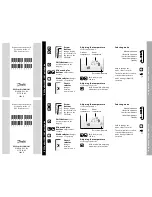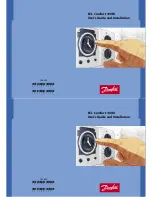
Rockwell Automation Publication ICSTT-RM448J-EN-P - April 2018
73
Before You Begin
Chapter 4
The screws are positioned with reference to the datum Hole A, which is shown
on
Figure 11
above.
• Set Dimension ‘X’ to suit number of base units:
• Min 157 mm for 1 base unit
• Min 283 mm for 2 base units
• Min 409 mm for 3 base units
• Add 126 mm for each additional base unit
Base Units Rows and Expansion Cables
AADvance 9300 I/O base units connect to the right hand side of the 9100
processor base unit (I/O Bus 1) and to the right hand side of other 9300 I/O
base units by a direct plug and socket connection. The I/O base units connect
to the left hand side of the processor base unit by using the 93100 expansion
cable (I/O Bus 2). The expansion cable also connects the right hand side of I/
O base units to the left hand side of other I/O base units to install extra rows of
CAUTION: HEAT DISSIPATION AND ENCLOSURE POSITION
The maximum air temperature rating in an enclosure where standard
AADvance processor and I/O modules are installed to ensure predictable
reliability is 70 ºC (158 °F) for I/O modules and 60 °C (140 °F) for processor
modules. System and field power consumption by modules and termination
assemblies is dissipated as heat. You should consider the effect of heat
dissipation on the design and positioning of your enclosure; e.g. enclosures
exposed to continuous sunlight will have a higher internal temperature that
could increase the operating temperature of the modules. Modules operating
at the extremes of the temperature band for a continuous period can have a
reduced reliability.
ATTENTION: DISSIPATION THERMIQUE ET EMPLACEMENT DE
L’ENCEINTE
La température ambiante nominale maximum dans une enceinte où un
processeur AADvance et des modules d’E/S standard sont installés pour
assurer une fiabilité prévisible, est de 70 ºC (158 °F) pour modules d’E/S et de
60 °C (140 °F) pour processeur. La consommation électrique du système et
du terrain par les modules et les ensembles de raccordement est dissipée
sous forme de chaleur. Vous devez tenir compte de l’effet de la dissipation
thermique lors de conception et de disposition de votre enceinte, par
exemple, des enceintes continuellement exposées à la lumière solaire auront
une température interne plus élévée qui pourrait accroître la température de
fonctionnement des modules. La fiabilité des modules fonctionnant aux
limites extrêmes de la plage de température pendant une période prolongée
peut être réduite.
















































